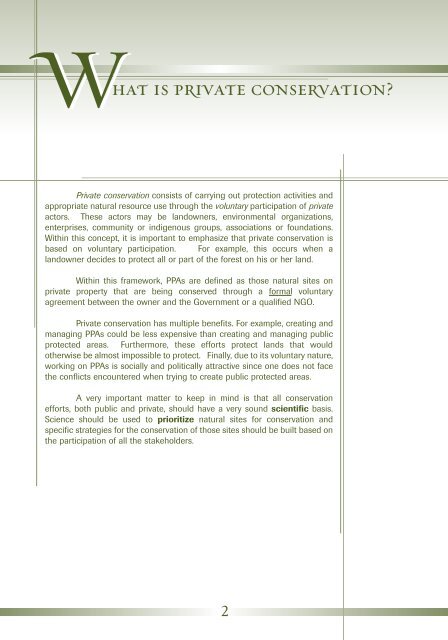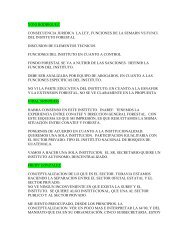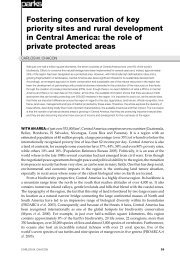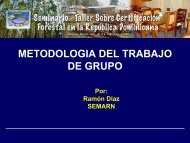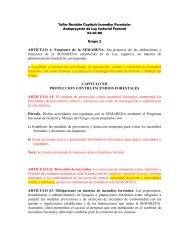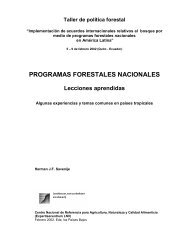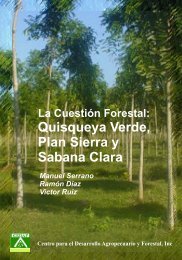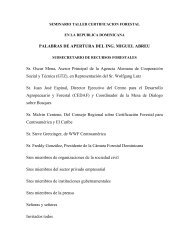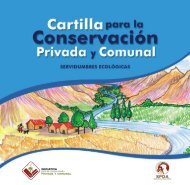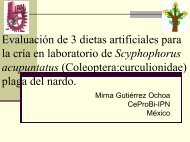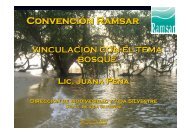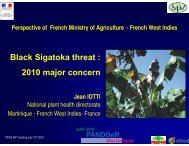Desarrollando Developing - CEDAF
Desarrollando Developing - CEDAF
Desarrollando Developing - CEDAF
You also want an ePaper? Increase the reach of your titles
YUMPU automatically turns print PDFs into web optimized ePapers that Google loves.
What is private conservation?Private conservation consists of carrying out protection activities andappropriate natural resource use through the voluntary participation of privateactors. These actors may be landowners, environmental organizations,enterprises, community or indigenous groups, associations or foundations.Within this concept, it is important to emphasize that private conservation isbased on voluntary participation. For example, this occurs when alandowner decides to protect all or part of the forest on his or her land.Within this framework, PPAs are defined as those natural sites onprivate property that are being conserved through a formal voluntaryagreement between the owner and the Government or a qualified NGO.Private conservation has multiple benefits. For example, creating andmanaging PPAs could be less expensive than creating and managing publicprotected areas. Furthermore, these efforts protect lands that wouldotherwise be almost impossible to protect. Finally, due to its voluntary nature,working on PPAs is socially and politically attractive since one does not facethe conflicts encountered when trying to create public protected areas.A very important matter to keep in mind is that all conservationefforts, both public and private, should have a very sound scientific basis.Science should be used to prioritize natural sites for conservation andspecific strategies for the conservation of those sites should be built based onthe participation of all the stakeholders.2


